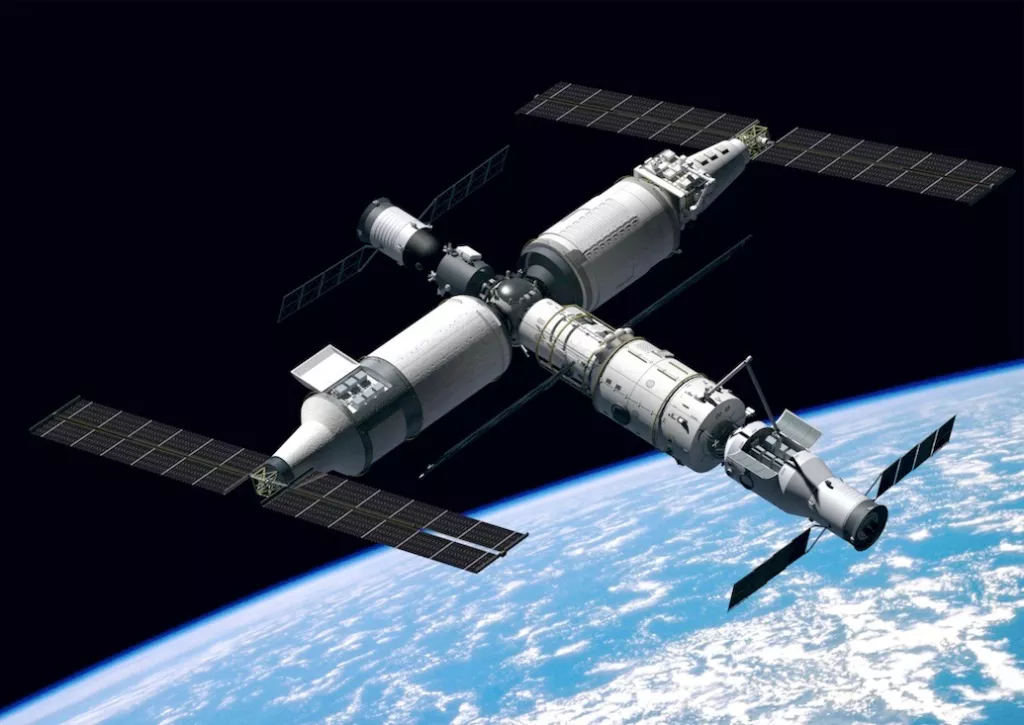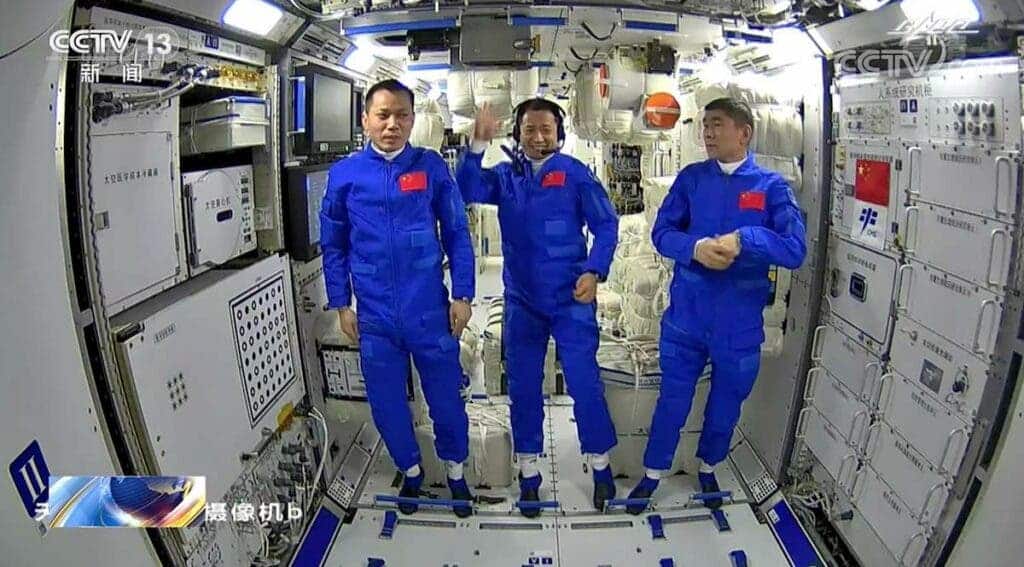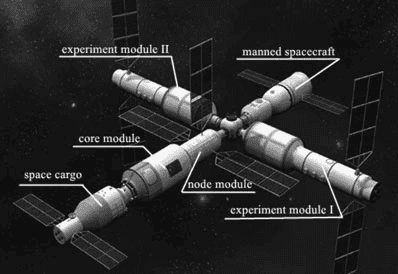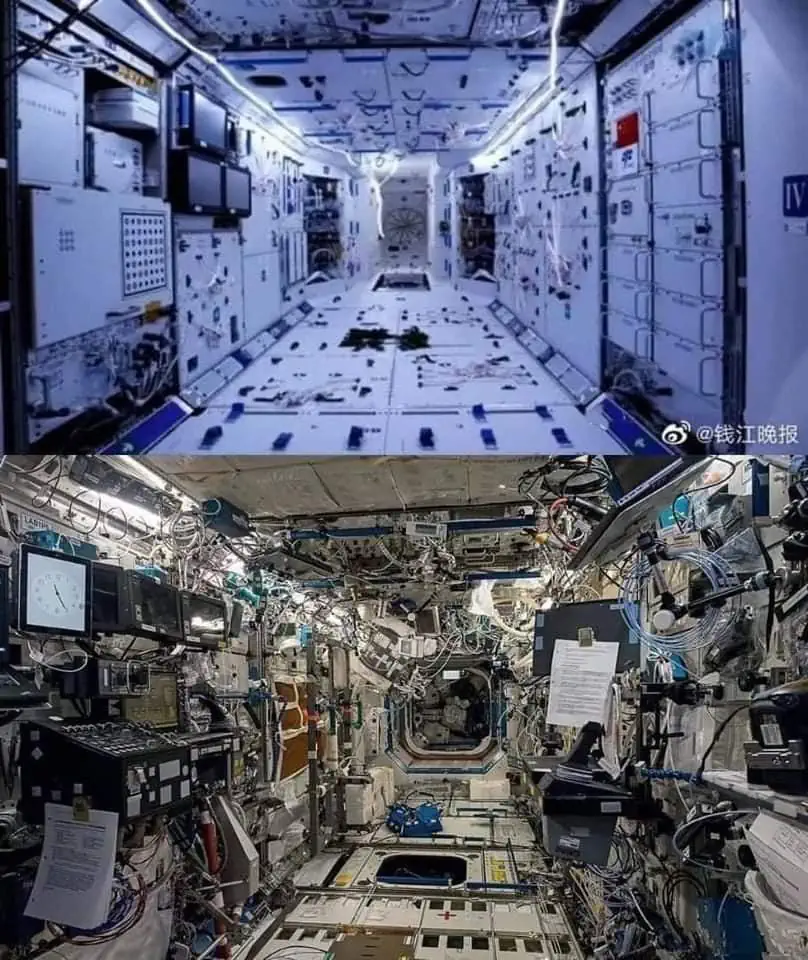
For almost two decades, China had been expressing a keen willingness to participate in the International Space Station (ISS). In every instance, China’s initiatives were blocked by the United States government.
In 2011, the U.S. committed to this hard line by having Congress pass a law prohibiting NASA, or any U.S.-based organization for that matter, from having any ties with Chinese space programs out of concerns for national security. From that moment on, anyone considering collaborating on space matters with China had their hands tied.
Well, China had enough too. If they won’t less us in, we’ll make our own space station, the Chinese must have thought — and so they did. That being said, let’s learn more about Tiangong, or ‘Palace in the Sky’, China’s first long-term space station.
What is Tiangong?

Part of a broader and highly ambitious manned space program, Tiangong is a space station solely built and launched by China in low Earth orbit, at an altitude between 340 and 450 km (210 and 280 mi) above Earth.
After the final module is installed in October 2022, the space station will consist of three main modules arranged in a “T” configuration. It’s a tried and tested modular design that has worked well for the ISS so far. Three Chinese astronauts, or ‘taikonauts’ as they’re known in their country, have been constantly manning the Tianhe core module since 2021.
The China National Space Administration (CNSA) regularly conducts scientific experiments on the space station, but the ultimate goal of Tiangong is to provide invaluable insights that will help China make the leap to manned missions to the moon and perhaps even Mars.
Tiangong is not China’s first space station. Tiangong-1 was China’s first prototype space station that orbited Earth from 2011 to 2018, followed up by Tiangong-2 from 2016 to 2019. These projects served to demonstrate China’s ability to perform autonomous orbital rendezvous and docking, but also manned spaceflight.
On June 16, 2012, China’s first female astronaut, Liu Yang, docked with Tiangong-1 along with two other astronauts. China’s longest crewed space mission lasted 30 days during a mission to Tiangong-2 in 2016.
How big is Tiangong?
Once completed, Tiangong ‘s three modules will have a combined mass of around 100 tons, which is about a fifth of that of the ISS and right about in the same ballpark as the now defunct Soviet Mir space station, which deorbited in 2001. It will have a length of 20 meters and house three people inside a 110 cubic-meter living space.
What are Tiangong’s modules?

Tiangong consists of three main modules. The first, known as Tianhe, or ‘Harmony of the heavens’, launched on April 29, 2021 aboard a Long March 5B rocket and is the central node for the main space station.
The bus-sized Tianhe is responsible for providing all the essential functions for the space station, including life support, navigation, and even propulsion. This is also where the taikonauts spend most of their time since this is where their living quarters are located.
The second module launched on 24 July 2022. Wentian, or ‘Heavenly quest’, is a lab module meant for scientific experiments. This is also the module through which taikonauts exit the station to conduct spacewalks. Outside the hull, there are various smaller modules and stations where external experiments can be set up.
Mengtian, or ‘Heavenly dream’, is the third and final module of Tiangong. It’s supposed to launch this year, in October, from the Wenchang spaceport in south China. Mengtian will host a number of science cabinets for conducting a wide range of experiments. It also features a payload airlock, allowing the station’s small robotic arm to take science payloads and install them on a platform on the module’s exterior.
In total, the space station will include 14 internal racks for experiments and about 50 external ports for studies in space.
A set of 30-meter solar panels fitted on Wentian and Mengtian provide most of the station’s power, along with smaller arrays measuring 18 meters that branch out of Tianhe.
An automated freight space vehicle, called Tianzhou, or — you’ve guessed it — ‘Heavenly ship’, is in charge of transporting large payloads up to a mass of 6,500 kg to the station. It has pressurized, semi-pressurized, and unpressurized cargo capabilities, and is able to transport airtight cargo, large extravehicular payloads, and experiment platforms.
How the Tiangong Chinese space station compares to the ISS
Tiangong only has three modules, compared with the ISS’s 16 modules. This means there’s a lot more room for the crew to live and work on the ISS, which typically has a crew of 6, but can theoretically accommodate as many as 13 astronauts onboard.
However, the ISS took more than 10 years and 30 missions to assemble. It’s the result of an unprecedented collaboration between 15 different countries and five space agencies, whereas Tiangong is solely made by a single country and should be completely assembled over the span of a single year.
The first ISS component was launched in 1998. Originally, the ISS was commissioned for a 15-year life span but it has outlived all expectations. According to NASA, the ISS will be officially decommissioned and deorbited in 2031.
This means that a lot of the hardware onboard the ISS is quite old and outdated, whereas everything on Tiangong is squeaky clean and technologically up to date. This side-by-side comparison of the interiors of the ISS versus China’s Tiangong is quite striking.

China wants to operate Tiangong for at least a decade and is keen on being open to international cooperation, with both foreign space agencies and private companies.
This could well mean that just a couple of years from now, Tiangong could be the only space station remaining in Earth’s orbit, after the ISS crashes and burns into Earth.
What Tiangong means for China’s growing space program
Tiangong represents a major stepping stone for China’s journey towards becoming a space power that rivals or even surpasses the United States. China’s National Space Administration wants to leverage its space station for a suite of complementary space missions. For instance, Tiangong is supposed to provide refueling power for China’s upcoming space telescope Xuntian, which will have a 300 times wider view than Hubble and is slated to launch next year.
Between 2016 and December 2021, China launched 207 space missions, including Chang’e 5 which returned moon samples and Tianwen 1 which slipped into orbit around Mars. China also aims to put boots on the moon in the relatively near future, as early as in the next five years, and even wants to build a lunar outpost in the next decade. China also wants to both return samples from an asteroid and study a comet up close through its planned ZhengHe mission.
How to see the Tiangong space station
Like the ISS, Tiangong is actually visible with the naked eye — that’s if you know where exactly to look. Websites like n2yo.com show you the space station’s current location above Earth in real-time, as well as its predicted path up to ten days in advance.
However, bear in mind these predictions are much like weather forecasts — the more days in advance you try to anticipate movement, the likelier it is that the position will be inaccurate. That’s because the station is constantly falling towards Earth and has to periodically turn on its boosters to lift itself back into the proper altitude, thereby affecting its exact path.
Tiangong orbits Earth every 91 minutes. You won’t be able to see it during the daytime, but if you’re lucky enough to find yourself right below the Chinese space station at night and you’re in a dark spot away from bright city lights, you may be able to discern a tiny, fast-moving spark of light trailing across the sky.






